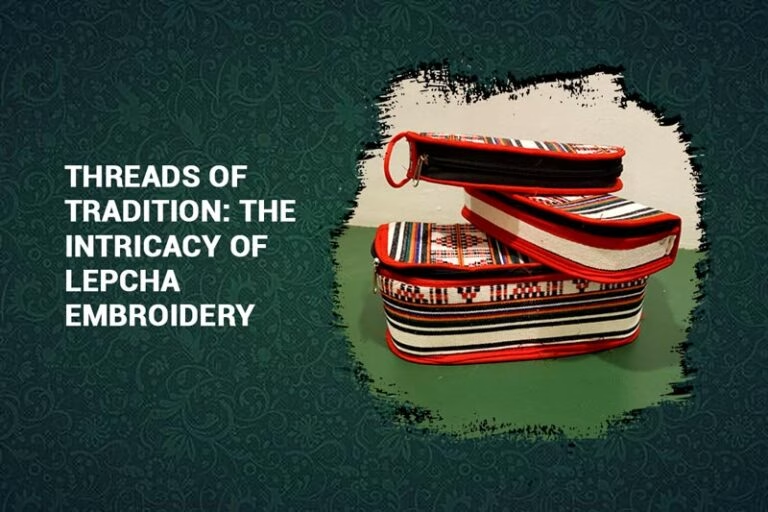The origin of Lepcha Embroidery can be traced back to the indigenous Lepcha community, who have been living in the Himalayan region for many centuries. Throughout many years, Lepcha women have continued the tradition of embroidery, sharing their expertise and methods from one generation to the next.
Immersed in symbols and customs, Lepcha Embroidery mirrors the community’s spiritual beliefs, natural environment, and social traditions. Every single stitch represents a tale, drawing inspiration from natural elements, tribal customs, and ancient knowledge. Lepcha Embroidery is known for its detailed designs, lively hues, and precise workmanship. Historically, embroidery is typically executed on cotton or silk material with diverse stitches like satin stitch, chain stitch, and running stitch.
The patterns are frequently sketched by hand or transferred onto the material with dyes made from plants and minerals. In Lepcha Embroidery, the designs often include geometric figures, flower designs, animal patterns, and lucky symbols, all holding cultural importance and beauty. In Lepcha culture, embroidery is significant as a representation of identity, lineage, and spiritual links. Lepcha women frequently decorate their clothing, accessories, and household items with elaborate patterns that mirror their social standing, marital status, and tribal identification.
During significant events like celebrations, rituals, and ceremonies, people wear decorative clothing like the traditional “Dokoh” and “Thokro” accessories. The act of embroidering is a means of expressing oneself and paying tribute to the cultural heritage and artistic heritage of the Lepcha community.

